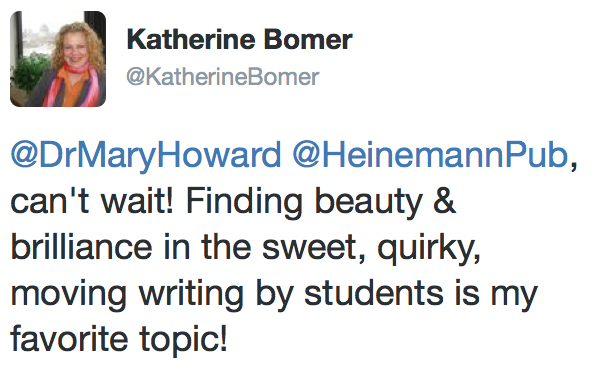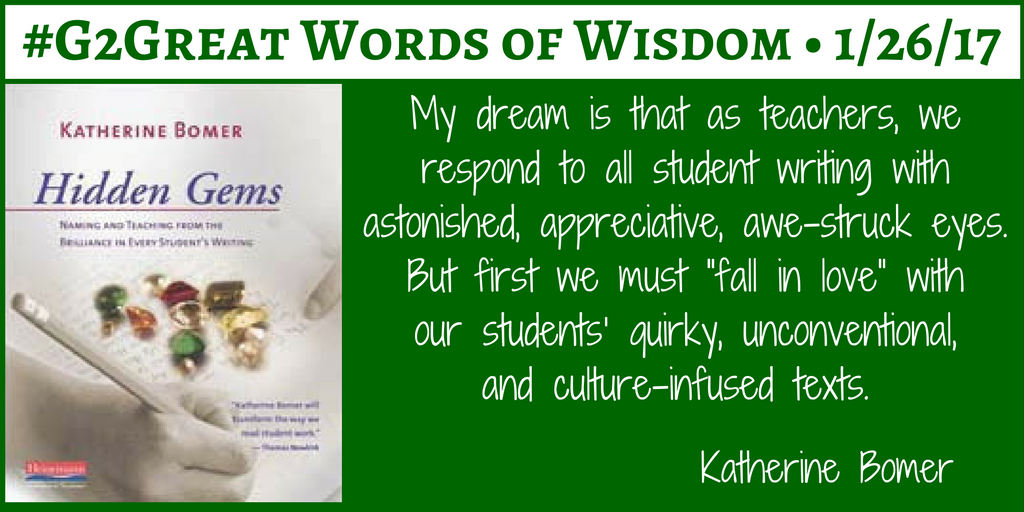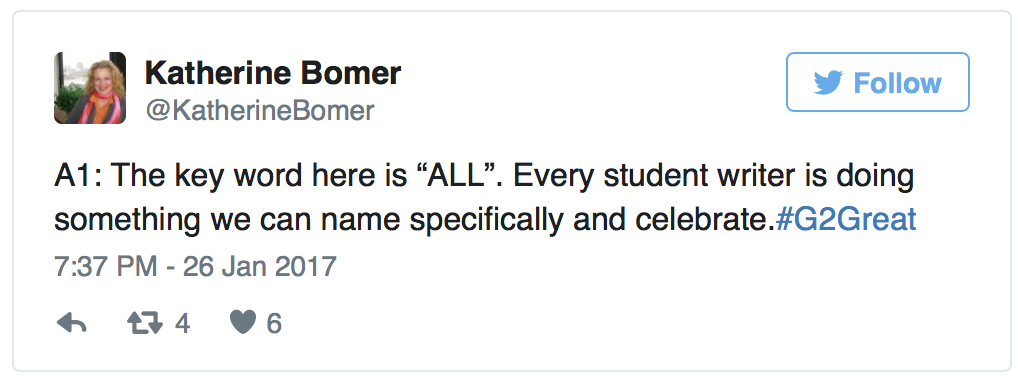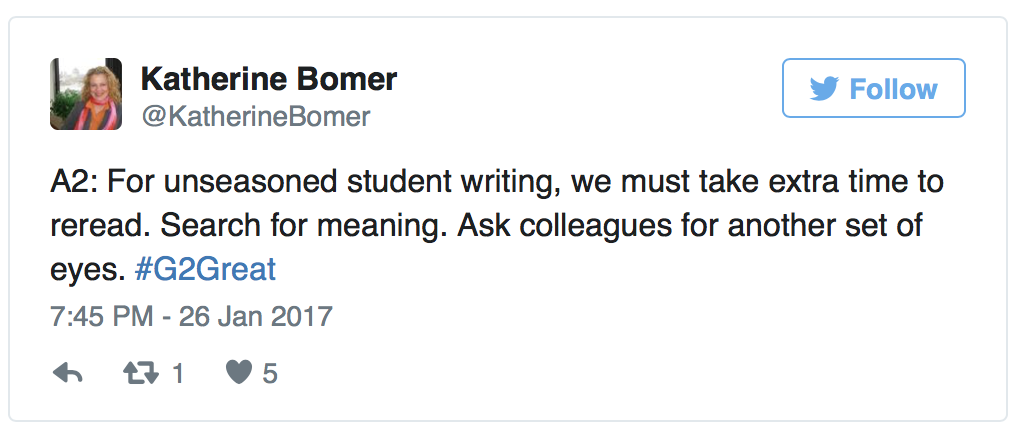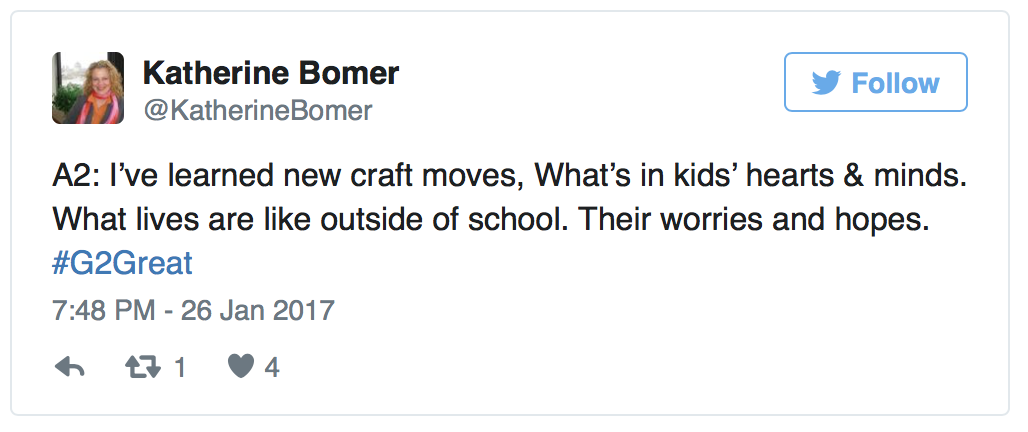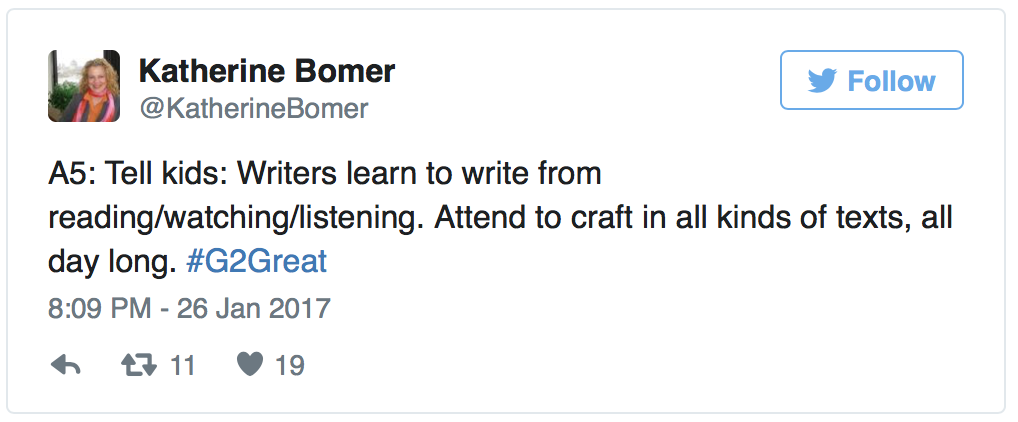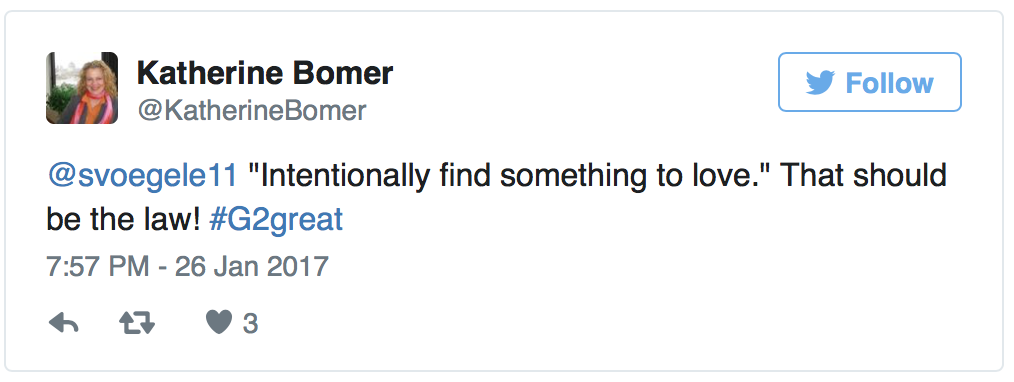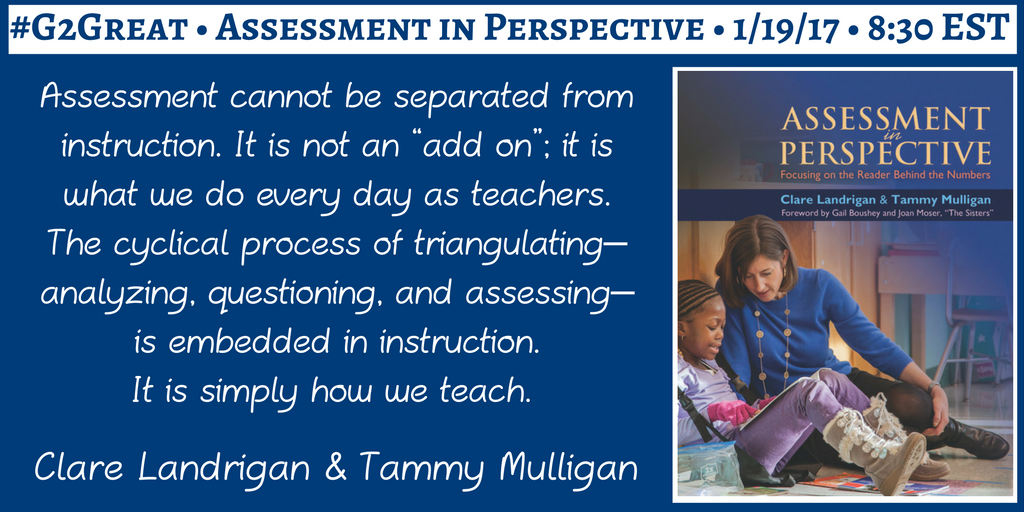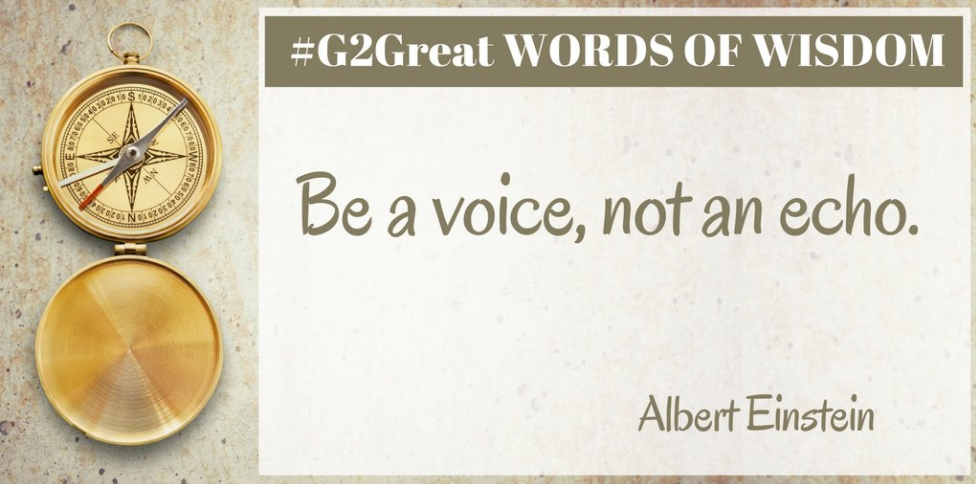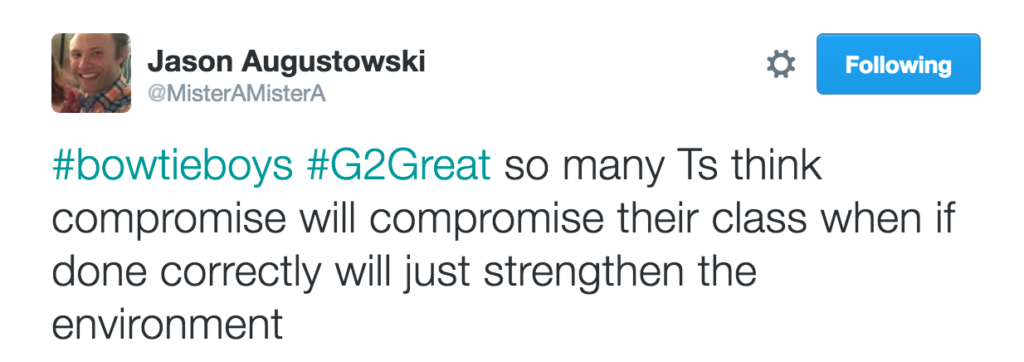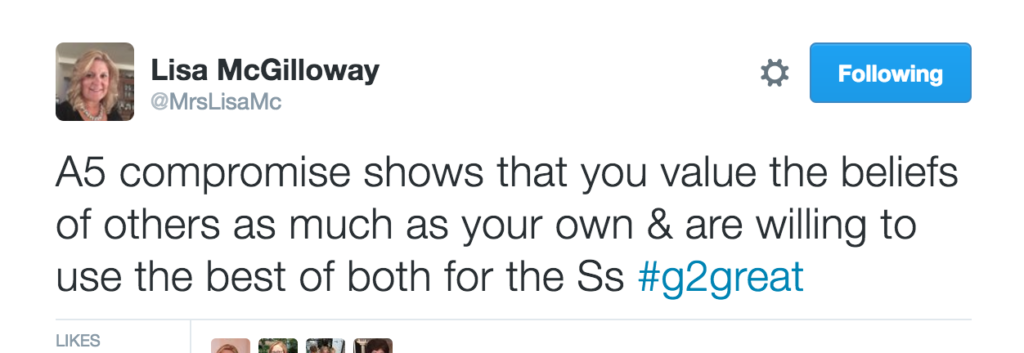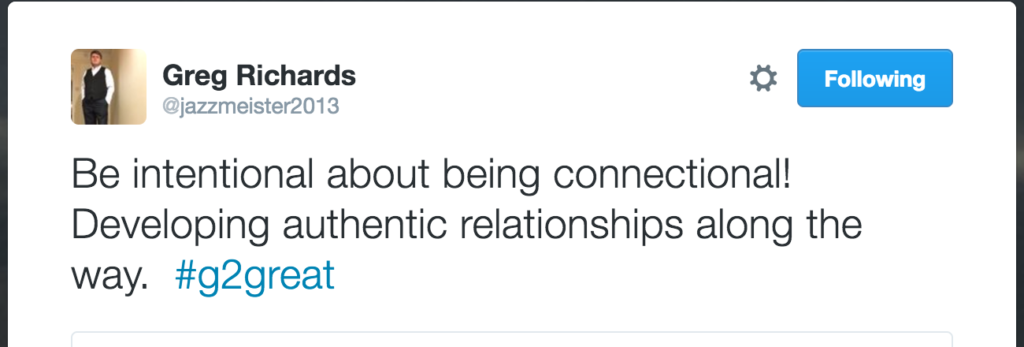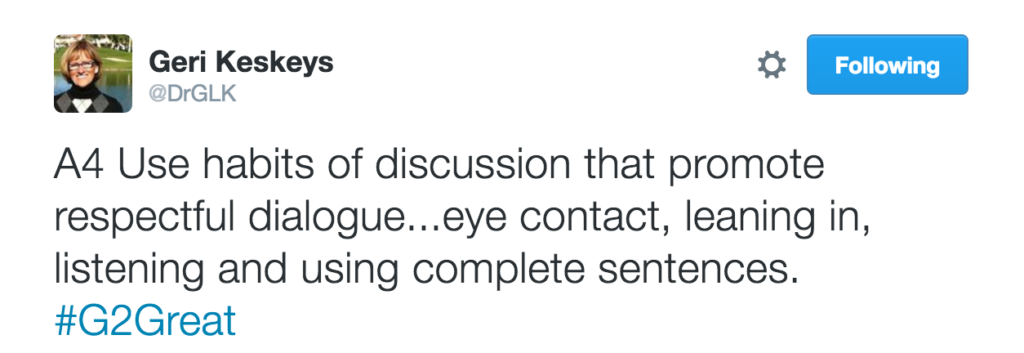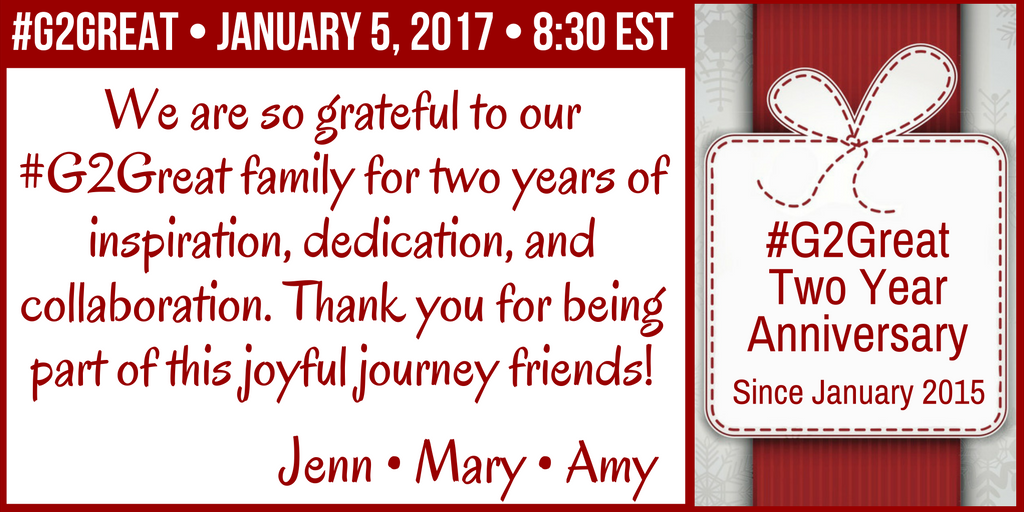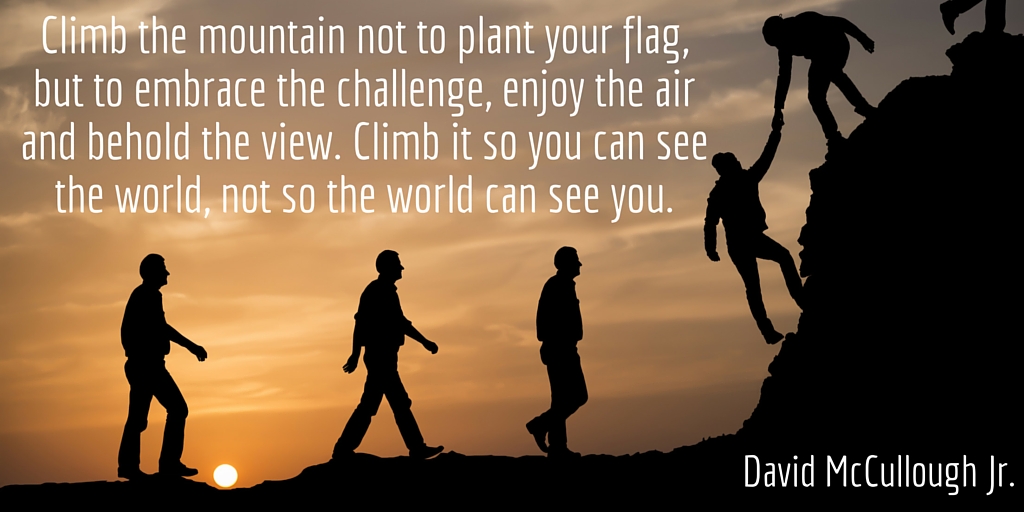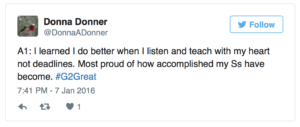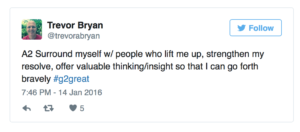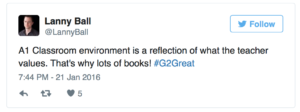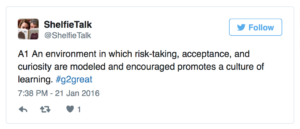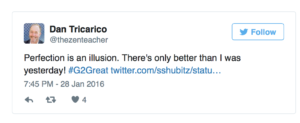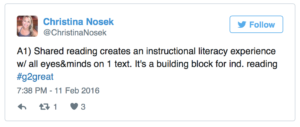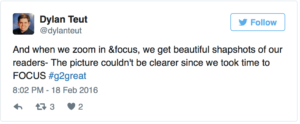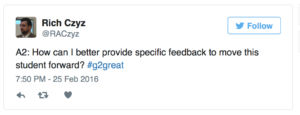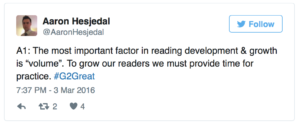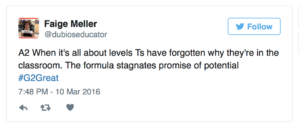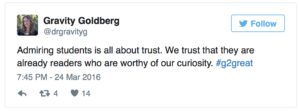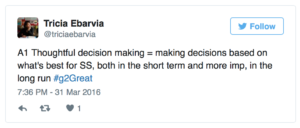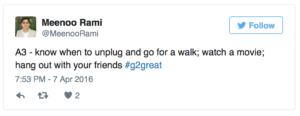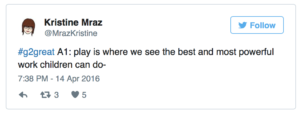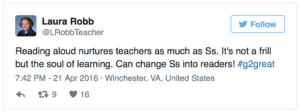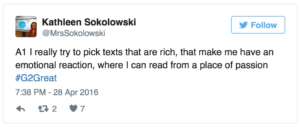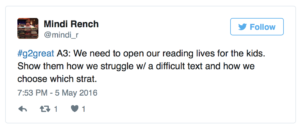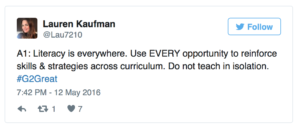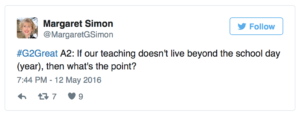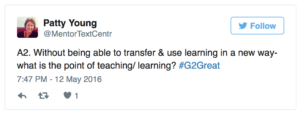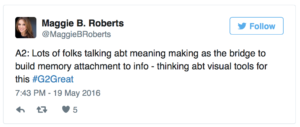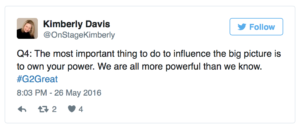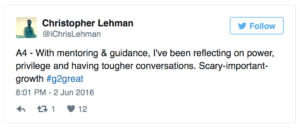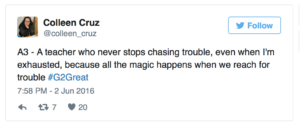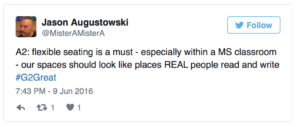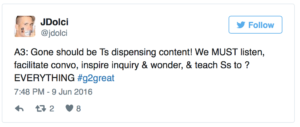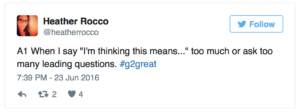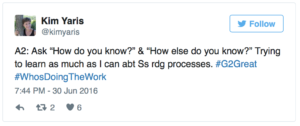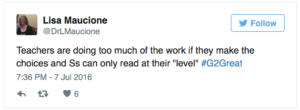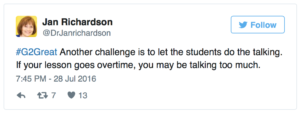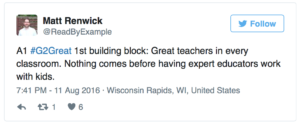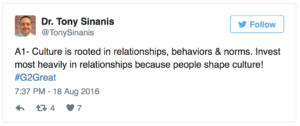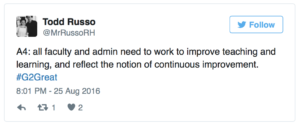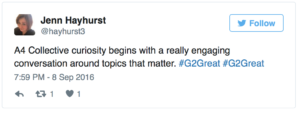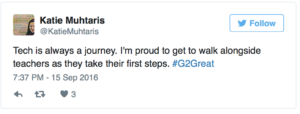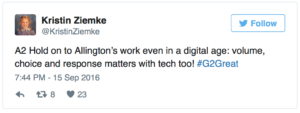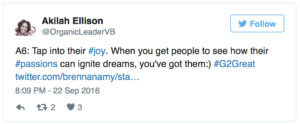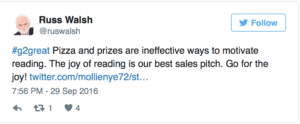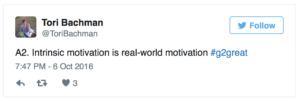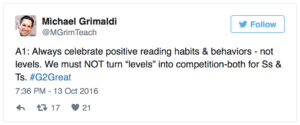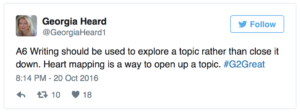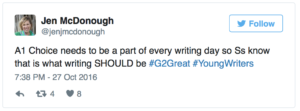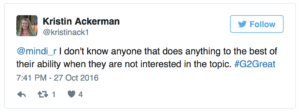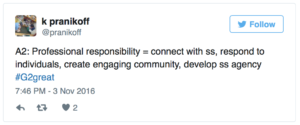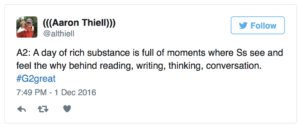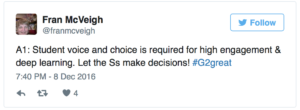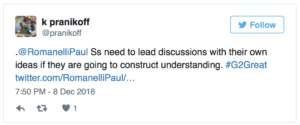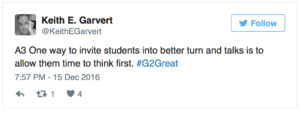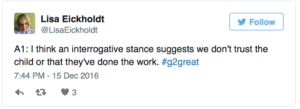by Mary Howard
On January 26, 2017, #G2Great enthusiastically welcomed Katherine Bomer to our Twitter home. Our enthusiasm was obviously shared by a multitude of educators who have been collectively inspired by Katherine’s beautiful book, Hidden Gems: Naming & Teaching from the Brilliance in Every Student’s Writing.
Before the #G2Great clock even signaled our 8:30 EST welcome, Katherine set the tone for the evening with a tweet that instantly spread a shared sense of professional appreciation for student writing. The twitter door quickly opened and educators rushed forward to engage in lively (and appreciative) conversations that would breathe new life into Katherine’s words. For the next hour, children took center stage as we celebrated the beauty in their writing
In Katherine’s remarkable Heinemann blog post, See the Brilliance in All Student Writing, she reiterates her heartfelt dream for celebrating the ‘hidden gems’ in student writing:
And fall in love we did! As I looked back at Katherine’s joy-infused tweets, hidden gems tucked lovingly in her words drifted graciously to the surface and stretched across the Twittersphere. Suddenly,’falling in love’ with student writing took on a new sense of urgency through Katherine’s Hidden Gems:
Katherine’s Hidden Gem #1: Embrace “Awestruck Appreciation” for ALL children
As educators who are committed to the success of our students, we are resolute in our belief that each child is worthy of celebration. We tuck appreciative ‘love’ dust into our back pocket reserved for any child who happens to be in our presence, secure in the knowledge that their hidden gems are awaiting discovery. Our celebrations are not reserved for a select group of children because their writing “earns” our appreciation but for EVERY child because their writing “deserves” our appreciation.
Katherine’s Hidden Gem #2: See Student Writing through New Eyes
Each child brings a unique writing fingerprint to the experience. These distinctive imprints range from hidden gems just out of view to those that beckon us to move beneath the surface until we find them. We recognize that there will be different ‘levels of hidden’ but know that a gem is always there even if it is not immediately visible to us. Our commitment to find those gems drives us to look, read, and search until we do. And when it feels hopelessly out of view, we call on our fellow gem seekers because we know that they are likely to see what we cannot.
Katherine’s Hidden Gem #3: Set Your Sights to Higher Levels of Expectation
While celebrating “sweet, quirky, moving writing” is at the heart of hidden gem seeking, we know it’s about so much more. We do not celebrate a product by viewing writing as surface level marks on a page, rather celebrating the process that gave meaning to those marks and why that meaning touched us in the first place. We know that it is this process that will enrich our teaching and thus student writing so we make children privy to the process in order to elevate the very thinking that will elevate our own. This writing process initiates deeper conversations with children so the thinking behind the hidden gems illuminates pathways to new opportunities to impact future gems worth celebrating.
Katherine’s Hidden Gem #4: Make What May Be Invisible Visible
The hidden gems in student writing stretch beyond the writing because they reflect our desire to recognize and acknowledge the wonderful things children are already doing at that moment in their writing lives. Looking for the writer’s NOW hidden gems sharpen our lens to support the writer’s LATER hidden gems. Zooming in on those gems today allows us to name glimmers of brilliance in the moment to set off a domino effect for new gems in the moments ahead. We use these hidden gems to create a series of stepping stones that will inevitably lead children to new possibilities in the next piece and the one after that.
Katherine’s Hidden Gem #5: Respect Student Writing as a ‘Living Document’
Each minute we are fortunate to spend in the company of children is a gift wrapped in a precious package of opportunity. This gift allows us to change places with students as we become the student and they become our teachers. As we look at their writing, we get a glimpse of the hopes, fears, dreams and joys that exist both within and beyond our walls. And as a result, we don’t just come to know their writing but to understand who they are as humans. Those glimpses help us see the writer behind the writing and our personal and professional lives are enriched because they shared their lives with us.
Katherine’s Hidden Gem #6: Plant Writing Seeds that will Blossom
Teachers who celebrate the hidden gems in student writing seek to constantly plant new seeds. We accomplish this by gathering beautiful books by authors who become our co-conspirators. We invite them into our room through their books because we know we can join hands in our efforts to inspire hidden gems yet to come. With each collaboration we gain new understandings about the writing and the writer in front of us and we apply these understandings in ways we could not possibly have envisioned alone. As teachers and authors merge their efforts, we plant new hidden gem seeds lovingly beneath the writing soil until the next reading where we can celebrate anew.
Katherine’s Hidden Gem #7: Love Deeply and with Resolute Intentionality
I can’t help but wish that every teacher would print Katherine’s beautiful words so her message would be in view each time we linger beside a child and a piece of writing. When we seek to “intentionally find something to love’ we embrace a mindset that allows us to continuously expect the unexpected. We know that each time we look closely at a piece of writing from the heart, we will see the writer and find hidden gems to celebrate again and again. And our love affair with student writing then leads us to new possibilities that will enrich the lives of both students and teachers!
Katherine’s book is a virtual call to arms and teachers are ready to heed that call in a passionate quest to find and celebrate the hidden gems that reside within our students’ writing. Katherine implores us to uncover the beauty in their writing, holding their hidden gems in our hands so that we can put them on display for children to enjoy as much as we do. And in doing so we instill a shared sense of joy as we both look at writing with “astonished, appreciative, awe-struck eyes” in a mutual celebration. That vision is definitely worthy of love.
The entire #G2Great family is grateful to Katherine for inspiring a celebratory journey where each of us will continue to uncover hidden gems in student writing everywhere.
Learn more about Katherine Bomer at the links below
Hidden Gems Interview with Stacey Shubitz
See the Brilliance in All Students Writing

